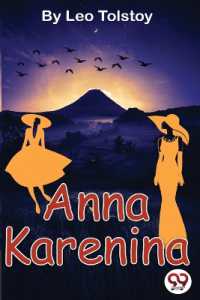Full Description
Technological advances and the way young people interact with them means children are thinking and processing information in an increasingly visual manner. Visualising Literacy and How to Teach It recognises that many, if not most, children are attracted to visual images and uses this as a basis for introducing and developing a range of thinking skills and strategies for learning. This practical resource offers a selection of visuals, each accompanied by activities that give children practice in using their imaginations in different ways.
Visualising Literacy and How to Teach It not only explores creative and critical thinking skills but also pays close attention to the overarching thinking skill that we call imagination. The book contains around 150 practical activities that develop children's imaginations, focussing on a range of thinking skills, including but not limited to the following:
developing observational/attentional skills
noticing details (focussing of attention)
assimilating visual information
increasing experience of inferential thinking, speculation, dealing with generalisations
boosting vocabulary
empowering one's attitude towards exploring ideas
learning different questioning techniques
increasing the ability to empathise
becoming comfortable with uncertainty and ambiguity
Many of the visualisation techniques can be applied to developing different aspects of emotional resourcefulness, including empathy, positive self-image, anchoring positive thoughts and modifying negative thoughts and feelings. This is, therefore, an essential resource for any teacher or education professional who is keen on developing children's ability to think and express their own ideas.
Contents
1. Using This Book and Introduction 2. Some Definitions3. Educational Benefits of Developing the Imagination 4. The Attitude 5. Mind Warmups 6. Picture Exploration - a Medley of Thinking Skills 7. Questioning with Confidence 8. Collecting Motifs 9. Colour Combinations 10. Subtle Distinctions 11. Sound Words 12. Submodalities 13. Step In - The Physical Dimension 14. What's the Feeling 15. Two Anecdotes 16. Just Enough 17. Sensory Treasures 18. Spelling Strategies 19. Break State 20. Minimal Writing and Artful Vagueness 21. Cross-Matching Senses 22. Drawing Out Meaning 23. Point of View 24. Picture Masking 25. Beyond the Frame 26. Cinematic Method for Describing a Picture 27. Studying Pictures 28. Sensory Journey 29. Educational Value of the Sensory Journey 30. Vivid Particularities 31. Creative Conversations 32. Imagining Impossible Things 33. More Thought Experiments 34. Inspiration 35. A Medley of Visualisations 36. Reframing 37. Scrambletales 38. Linking Game 39. Descriptive Writing 40. Some Literary Devices for Descriptive Writing 41. Pictograms and Hieroglyphs 42. Letter Associations 43. Describing Phonemes 44. Interpreting Abstract Shapes 45. Venn Diagrams 46. Sliderman 47. Heads or Tails 48. Dice Journey 49. Controlling the Imagination 50. Tackling Text 51. Thoughts, Feelings, Memories and Dreams 25. Mindfulness 23. A Special Place 54. Imagination Beyond the Curriculum References and Resources Index








